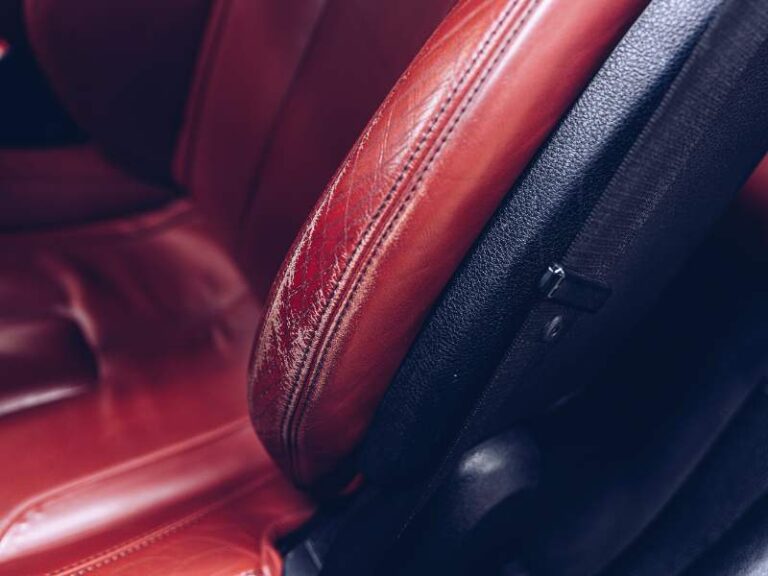Can 4 Year Old Use Booster Seat?
You might think that a 4-year-old is too young to use a booster seat, but in fact, it's often the ideal time to shift. Many safety experts recommend switching to a booster once your child meets specific weight and height requirements, ensuring the seat belt fits correctly. However, understanding the nuances of these guidelines and local regulations can be a bit tricky. So, what should you consider before making this important decision for your child's safety?
Key Takeaways
- A 4-year-old can use a booster seat if they weigh at least 40 pounds.
- Transitioning to a booster seat typically occurs at age 4 for safety.
- Local laws may dictate booster seat usage; always check regulations.
- Proper installation is crucial for booster seat effectiveness and safety.
- Booster seats should be used until the child reaches about 4 feet 9 inches tall.
Understanding Booster Seat Requirements
When considering booster seat requirements, it's important to understand both legal regulations and safety guidelines. Each state has specific booster seat regulations that dictate when your child should move from a car seat to a booster seat. These regulations often focus on age, weight, and height, making sure that children are safely secured in vehicles.
To start, you must guarantee proper installation of the booster seat in your car. A booster seat should be positioned in the back seat, using the vehicle's seat belt to secure it. Make sure the lap belt fits snugly across your child's upper thighs, not their stomach, while the shoulder belt rests comfortably across their shoulder and chest.
A common mistake isn't adjusting the seat belt to fit your child properly, which can compromise safety in the event of a crash. Always check the booster seat's manual and your vehicle's owner manual for specific installation instructions.
Regularly assess the fit of your child in the booster seat, as they grow. By understanding and adhering to booster seat regulations, you're taking significant steps to protect your child while traveling.
Age and Weight Guidelines
Age and weight guidelines play an essential role in determining when your child is ready for a booster seat. As a parent, it's vital to understand that these guidelines not only guarantee compliance with booster seat laws but also prioritize your child's safety. Typically, children should shift to a booster seat when they reach around 40 pounds and are at least 4 years old. However, these criteria can vary by state, so it's wise to check local regulations.
Here's a quick reference table to help you:
| Age Range | Weight Range | Recommended Action |
|---|---|---|
| 4-7 years | 40-65 pounds | Use a booster seat |
| 8-12 years | 65+ pounds | Shift to seat belt only |
| 13+ years | Varies | Adult seat belt is sufficient |
Always guarantee your child's safety by following these guidelines. Remember, it's not just about age; weight is equally important. Your child's growth and size will ultimately dictate the right time for this shift, aligning with both safety standards and booster seat laws.
Safety Considerations for Booster Seats
Safety is paramount when it comes to using booster seats, as they play an essential role in protecting your child during car rides. To guarantee proper booster seat safety, it's vital to follow the manufacturer's instructions and understand your child's specific needs. A booster seat positions your child so that the vehicle's seatbelt fits correctly, reducing the risk of injury in the event of an accident.
When you're selecting a booster seat, look for features like a high back or adjustable headrest, which can provide added support for your child passenger. In addition, always make sure the seat is installed securely in your vehicle. A loose booster seat can compromise safety, so check the installation regularly.
It's also important to keep your child in the booster seat until they're tall enough to use the vehicle's seatbelt alone, typically around 4 feet 9 inches.
Be aware of local laws regarding booster seat use, as they can vary by state. By prioritizing booster seat safety, you're taking significant steps to protect your child on every journey.
Always remember that proper usage and adherence to guidelines are key to guaranteeing their safety.
Transitioning From Car Seats
Moving from a car seat to a booster seat is an important step in your child's development. As your little one grows, understanding when to make this change is key to guaranteeing child safety. Booster seats are car seat alternatives designed to elevate your child, allowing the vehicle's seat belt to fit properly. Here are some factors to take into account:
| Age Range | Weight Range | Signs for Change |
|---|---|---|
| 4 – 7 years | 40 – 100 lbs | Child outgrows car seat |
| 8 years and up | 60+ lbs | Seat belt no longer fits |
| 4 years and up | 40 lbs minimum | Child is mature enough |
| Varies by child | Varies by child | Can sit still for the ride |
When making the change, look for a booster seat that meets safety standards and fits your vehicle well. It's essential to make sure your child understands the importance of staying buckled up. Regularly check that the seat belt fits properly across their shoulder and lap. Prioritizing these steps will enhance child safety during car rides, making the journey enjoyable for everyone.
Frequently Asked Questions
What Types of Booster Seats Are Available for 4-Year-Olds?
When considering booster seat types for your 4-year-old, you'll find high-back and backless options. Each has unique safety features, like side impact protection, ensuring your child stays safe during car rides. Choose wisely!
Can a Booster Seat Be Used With a Lap-Only Seatbelt?
Using a booster seat with a lap-only seatbelt is like trying to sail a ship without a rudder; it's unsafe! For booster seat safety, always guarantee the seatbelt properly fits across your child's shoulder and lap.
Do Booster Seats Expire, and How Can I Check?
Booster seats do expire, typically after six to ten years. To check the lifespan, look for the expiration date printed on the seat or consult the manufacturer's guidelines for specific information about your booster seat.
Are There Specific Brands Recommended for Safety?
You might think all booster seats are the same, but safety ratings vary. Check brand comparisons for top-rated options like Graco and Britax, ensuring your child's safety isn't compromised while they grow.
How Do I Properly Install a Booster Seat in My Vehicle?
To guarantee proper booster seat installation, read the manufacturer's instructions carefully. Secure the seat using the vehicle's seat belt, making sure it's snug. Follow vehicle safety tips, guaranteeing the seat doesn't move more than an inch.
Conclusion
In summary, shifting your 4-year-old to a booster seat can be a safe and smart choice, provided they meet the necessary age and weight requirements. Think of the booster seat as a bridge, helping your child navigate the journey from a car seat to using the vehicle's seat belt alone. By following safety guidelines and local regulations, you guarantee your child travels securely, giving you peace of mind on every adventure. Always prioritize their safety!
- Can I Get in a Taxi Without a Car Seat? - January 26, 2025
- Can I Get Chlamydia From a Toilet Seat? - January 26, 2025
- Can I Get an Uber With a Car Seat? - January 26, 2025






